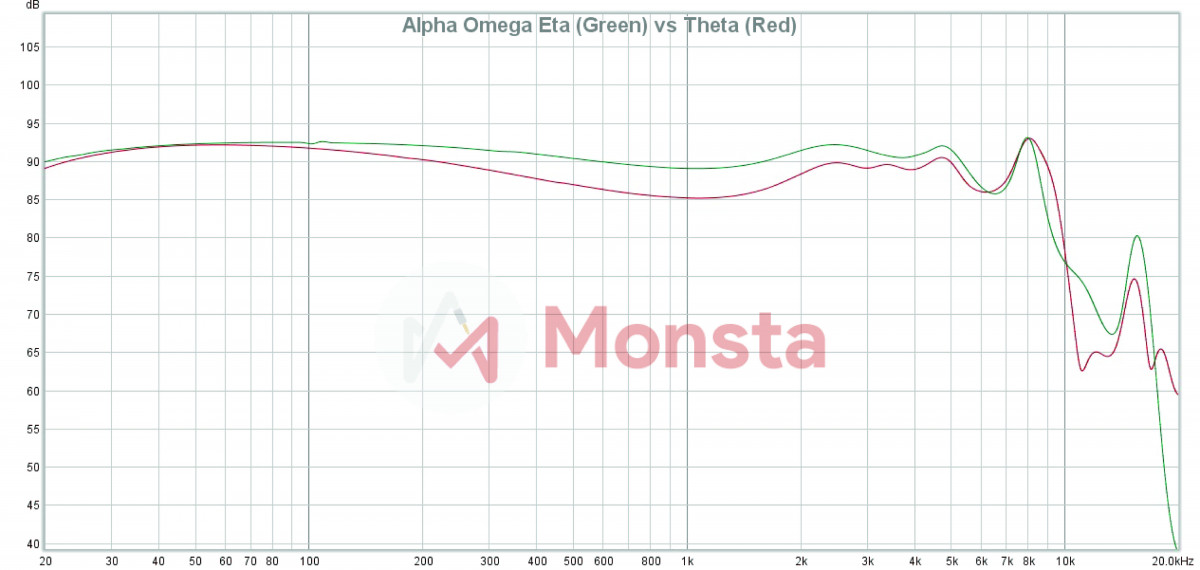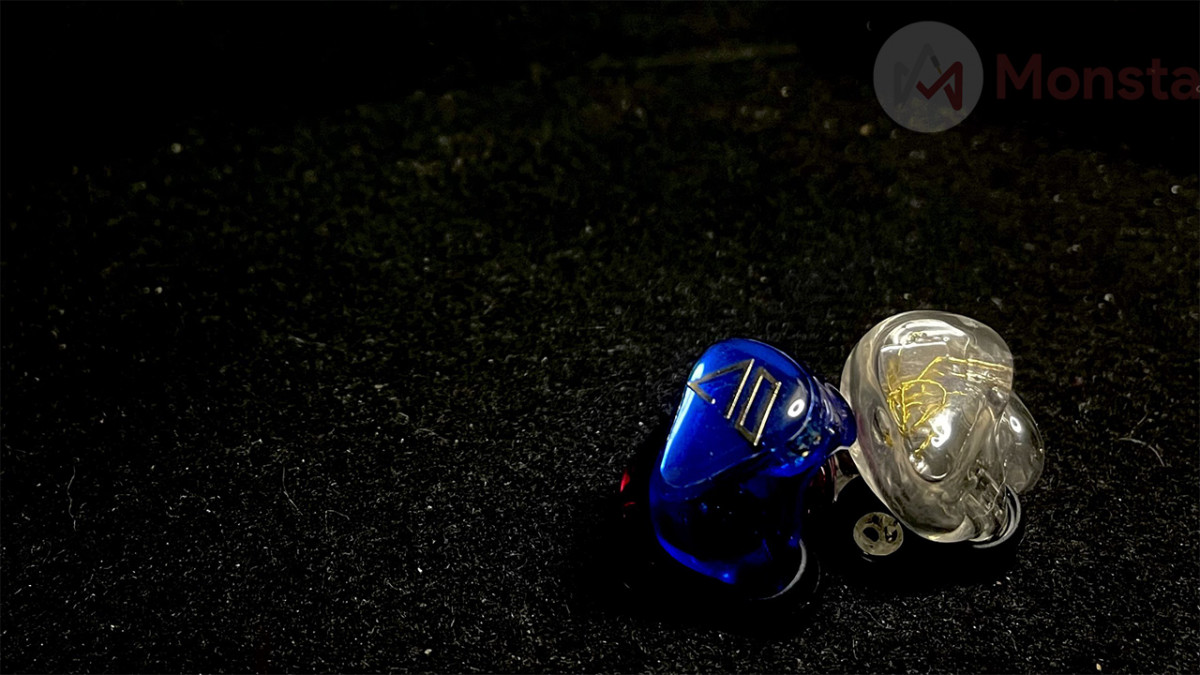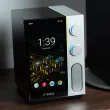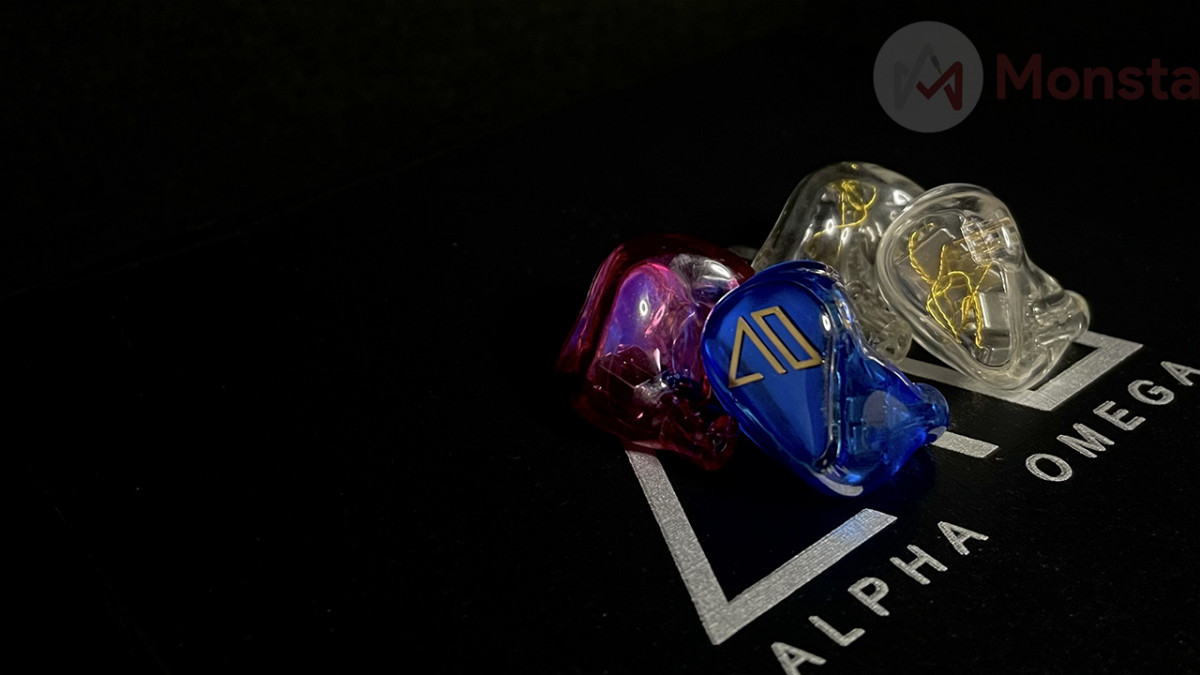Intro
Recently Alpha Omega contacted us to follow up with their IEM review unit and to our surprise, they sent us not one but two units of their current prototype IEMs. These prototypes are intended to be released as replacements to their current line-up which are supposedly more balanced tuning. Having reviewed only one of their previous IEM (the 1BA Epsilon), I cannot say much on their tuning direction (some might call their ‘house sound’) but the Epsilon was indeed quite a neutral-sounding IEM. This time round, the prototypes can arguably be considered as all-rounders which will undoubtedly please their potential owners. Thank you for this opportunity!!
Packaging
The packaging sent along with the units are similar to those of the Epsilon with a hard shell carry case being included in the low-profile, sleek looking box. Simple yet effective. Inside, I received 2 head units (1 pair of the Eta and another pair of the Theta) with 1 nice, slightly thin 8-core silver plated cable. Now I’m not sure whether this cable will be included as stock in their retail package but it’s honestly quite nice. The behaviour is similar to the one that came with the Epsilon which I was pretty happy with. No complaints here.
The build quality of the IEMs are top-notch despite being prototypes. The finishing are smooth and IMO they’re one of the more ideally sized universals where they can cater most ears and feels substantial. The shells are made of full resin with no cavities and utilizes sound tubes (1 tube for the Eta and 3 individual tubes for the Theta) directly from the drivers inside. The Theta are the one that really caught my eyes on first sight since the shells are transparent and I can clearly see the drivers, crossover, dampers and the sound tubes inside. Heck, even the connecting cables are gold in color and it really screams for attention.
Oh, did I mention that Alpha Omega do customs too? With just a little amount of extra charge for the ear mold, you can get them to make a custom IEM with a wide variety of faceplate designs and finishes. Just pick your desired driver configs. To be honest their custom service is considerably cheap, at least here in Malaysia. Now enough of the physical appearances and let’s get to the sound.
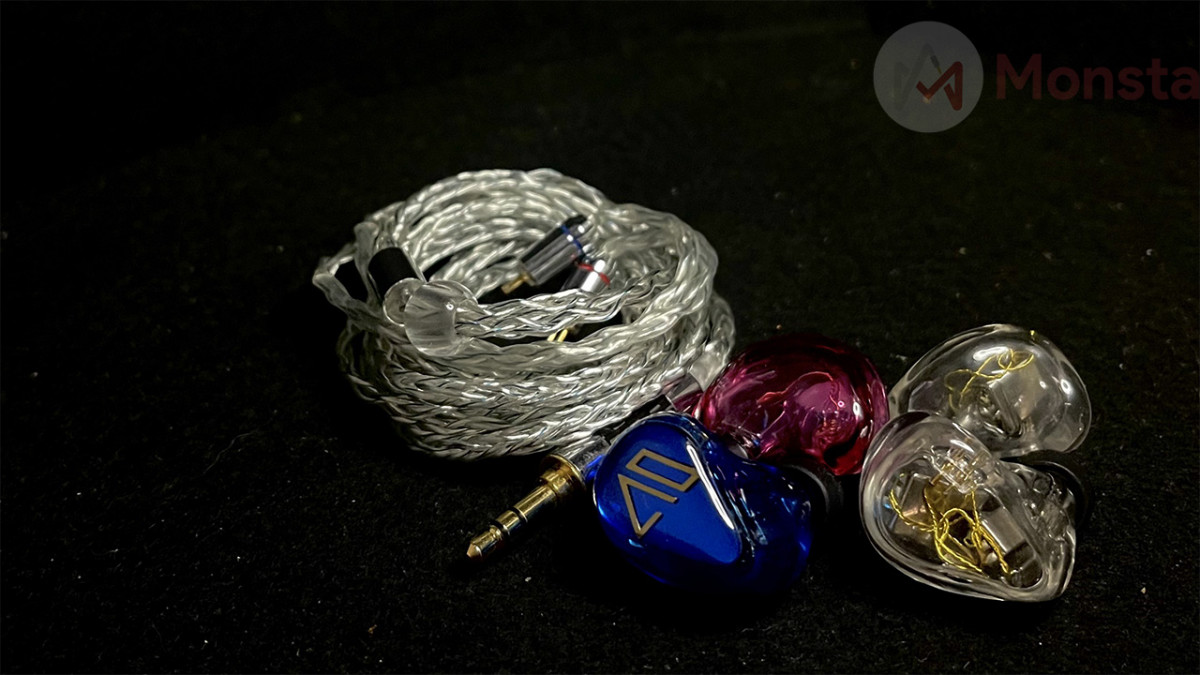
Functions & Specifications
2BA Prototype (Eta)
- Material: Full Resin
- Type: Universal Custom & Custom Shell
- Transducer Type: 2 Balanced Armature
- Impedance: 4ohms @ 1kHz
- Frequency Response: 20Hz – 20kHz
3BA Prototype (Theta)
- Material: Full Resin
- Type: Universal Custom & Custom Shell
- Transducer Type: 3 Balanced Armature (1 Knowles 22955, 1 Sonion 30095, 1 Bellsing 2389)
- Impedance: 10ohms @ 1kHz
- Frequency Response: 20Hz – 20kHz
What’s In The Box
- Alpha Omega Eta
- Alpha Omega Theta
- 4-Core Silver Plated 2pin Cable
- Hard Shell Carry Case
Retail Price & Where To Get
PM Alpha Omega Custom In Ear for the price.
Source Used
Xduoo X2s > Xduoo XQ-10 > Alpha Omega Prototypes
HiBy R2 > iFi Micro iDSD Black Label > Alpha Omega Prototypes
Songs Used
Sound & Tonality
Eta
The Eta is a slightly warm-neutral IEM and is somewhat monitor-ish sounding. No it’s not the kind of a ‘boring’ monitoring flat sound signature but rather of a more engaging one. Familiar with the Diffuse-Field? Well this one is kind of leaning towards that but not quite it. Tonality is somewhat on the fence of being cold but at least it’s not dry sounding atypical for ‘monitor-ish’ sound signature.
Theta
The Theta is a pretty balanced, slightly warm and almost dark sounding IEM. They’re quite smooth throughout the frequency range and is more or less adhering to Harman-ish tuning wise but with a safer non-fatiguing treble region. Tonality here is quite natural for an all-BA IEM, full and somewhat almost lush sounding but lacks the grandeur presentation coming from a dynamic driver.
Bass
Eta
Sub-bass is slightly rolled off but the presence is there. It’s subtle, making the IEM lacks authority and sounds lean down low. There’s no rumble to be heard here, which aligns with their tuning target. Bass is tight and fast. It’s energetic enough to provide some life on the low-end and but also smooth to provide an enjoyable, uncritical listening session. One thing that I admire is the clean and somewhat natural presentation of the BA handling the lower frequencies without being too dry.
Theta
Sub-bass is rolled off but is more elevated in this one. The presence is more authoritative to give you the ‘atmosphere’ when listening to soundtracks. Again, no physically engaging rumble here but is as expected from BA drivers. Bass is thumpy and smooth. I’d say the bass here is considerably fun and suits most genre very well. They aren’t textured and won’t extract every little details but it surely will keep your feet tapping along.
Mids
Eta
Lower-mids is clean with no audible bleed from the bass frequency. Again, they manage to sound lean but never dry. It just sounds natural especially if you’re used to the kind of tuning that they chose. Mids is arguably neutral, detailed and textured. They don’t sound quite natural (a bit thin for my personal liking) per se but for those who seek to hear tiny nuances here, you can’t go wrong with this set. Upper-mids is almost dry sounding but never shouty. Not even close. It’s just a textured and detailed presentation throughout. Not cold, not too thin, nothing that’s annoying or ‘off-sounding’ at least to my ears.
Theta
Lower-mids is weighty and full sounding. There’s slight bleed, sounding warm and smooth complementing the bass beautifully. It can be said as ‘slow’ for some but it’s nowhere near being muddy. Mids sound very natural and arguably quite detailed but a bit recessed. Detail retrieval here is arguably similar to the Eta to say the least but with a more ‘correct’ timbre. Upper-mids is clean and safe, might be too safe for some that it might help if it’s a tiny bit more aggressive. But that’s just me though. The balance here as I mentioned earlier already is wonderful.
Highs
Eta
Lower-treble is I’d say blunt but that would be exaggerating. There’s no crunch nor enough energy to be heard making the IEM to be somewhat mellow. It’s somehow restrained sounding which might turn off some people. Treble is perceptibly detailed and smooth. There’s no peak, no sibilance nor whatever annoyances but again, a bit too safe. However the presence region provides enough air. Yes they’re a bit mellow but there’s enough air to give the IEM some space to avoid from sounding claustrophobic.
Theta
Lower-treble is well articulated and clean sounding. They’re elevated enough to provide an exciting listen without being shouty nor thin. Treble is smooth and non fatiguing. Details are well presented despite being smooth. Similar to the Eta, there’s no peak nor sibilance can be heard here which suits for long listening sessions. My only gripe for this IEM is only in the presence region where it could really excel if it’s slightly airier which in turn will provide a sense of ‘spaciousness’. Even the Eta is airier in comparison.
Soundstage
Eta
The soundstage is slightly above average and is wider than deep for this fella. While they may not be the widest, they definitely have a deep soundstage. Only if it’s taller, it would be a stellar option for this particular sound profile.
Theta
Soundstage here is also average size-wise, if not slightly crammed in. It’s not crammed in a bad way but it would be much better if there’s enough spacing between the sounds coming at you. This is because it already have an evenly distributed soundstage height, depth and width with this IEM. Not to mention it is also quite tall as opposed to the Eta, which renders them to be almost holographic.
Imaging & Separation
Eta
Imaging is accurate with sound cues coming in from where it’s meant to (yes, literally), nothing too far apart and nothing too close together. It’s nicely laid out to be easily picked up. Separation is just OK considering it’s a 2-BA unit. It won’t be as analytical as some other multi-BA IEM (or even a similarly configured IEM) but it’s enough for different instruments and cues to sound within their own space and arrangements.
Theta
Imaging here is perceptibly precise and consistent within the soundscape. Sound cues are coming in an evenly distributed space, representing a well rendered (almost) holographic soundstage. Separation is excellent which really complements the already well-distributed, immersive soundstage. It won’t be mind blowing but it’s at least on par to compete with the current market offerings.
Drivability
Both IEMs are very easy to drive and they don’t really scale much with more input power being pumped in, as expected coming from all-BA IEM. For the Eta, they’re almost too dry sounding with more power while the Theta sounds slightly more open with more power. So it’s best to keep them paired with low-powered portable sources rather than outright full-on desktop setup since they’re already efficient enough to sound good even with minimal outputs.
Synergy
Eta
This one pairs really well with warm sources. The lean and clean tonality will be counter-balanced to provide a touch of warmth and weight to complement the whole sound signature of the IEM. This also helps with timbre to sound more ‘correct’ and more natural.
Theta
This one doesn’t really care on what source they’re being fed on. Tonality and timbre are less affected with only subtle minute differences across various sources but they do sound a little bit more ‘open’ and ‘airy’ with more powerful sources.
Comparison
Audiosense DT200 vs Eta
Despite having similar driver configs, they’re tuned differently. The DT200 is more ‘fun’ sounding in comparison to the Eta. Bass is more authoritative and impactful on the DT200. Mids is similarly clean and neutral sounding on both sets but the Eta is slightly thinner sounding. Treble is smoother on the DT200 but possess similar ‘airiness’ with the Eta.
On to the soundstage, the DT200 is slightly bigger and deeper in comparison. Soundstage height is arguably similar between the two but the DT200 is slightly more immersive. Imaging is more accurate on the Eta as compared to DT200. Overall I’d say the DT200 is more suited for a fun and immersive listening experience while the Eta is more suited for analytical listening.
Dunu SA3 vs Theta
Again, same driver configs but with different tuning target. The SA3 is more neutral sounding in comparison to the Theta. Bass is more impactful and fun on the Theta while the SA3 can be ‘limp’ in comparison. Mids is leaner and more textured on the SA3 while the Theta sounds fuller and more natural. Treble is where I’m leaning towards the SA3’s presentation where it is more articulated and sparkly as compared to the somewhat smooth and rolled off treble of the Theta.
For soundstage, the SA3 is noticeably wider, taller and deeper in comparison the the Theta. They both have a perceptibly holographic soundstage but with different stage size. Imaging is more precise on the SA3 thanks to its tuning but the Theta is no slouch here. They’re at least on par but due to their differences in tuning, the SA3 is perceptibly more accurate. Overall, they’re both technically competent and it only goes down to tuning preferences if you are to chose between the two.

For Who?
In my opinion, these IEMs are for those that have experienced several mainstream tunings that are readily available in the market and have found their one most preferred sound signature. I’m only saying this because once you’ve found your preferred sound, it’ll be only a matter of time for you to go the custom route.
Verdict & Stars
As the personal audio scene is being bombarded with lots and lots of new IEMs especially coming from the far East, we Malaysians are lucky enough to have our local audio companies (Custom IEM makers & innovators) to offer something a little bit different to give a breath of fresh air altogether. Now tuning wise these may sound similar to some of the offerings that are already on the market but now at least we have a chance to have one with our own fit and custom design to make it even closer to us personally. What’s not to love about that? Cheers!
Eta –  (3 / 5)
Theta –
(3 / 5)
Theta –  (4 / 5)
(4 / 5)
